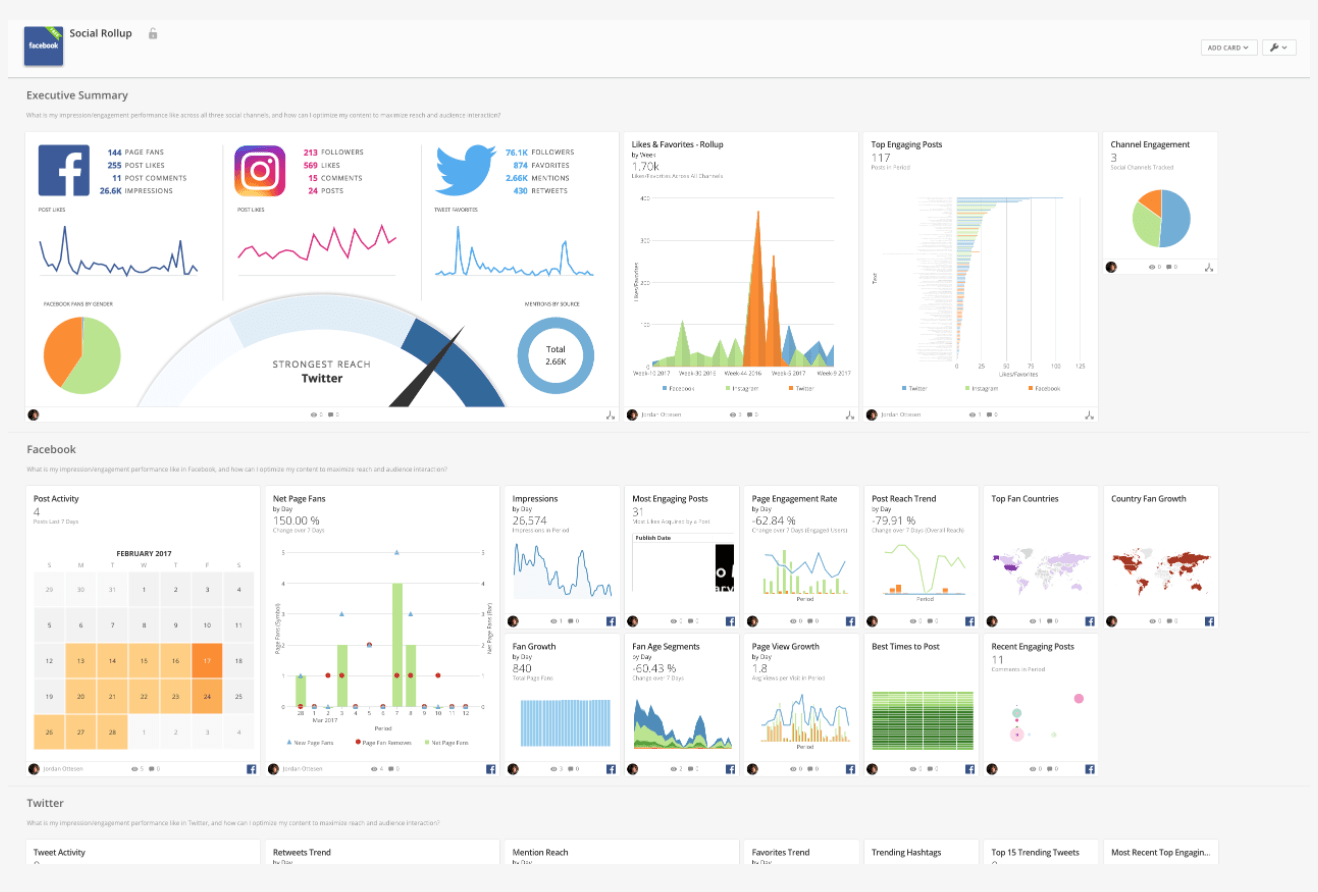App Of The Week: Social Rollup
By Julie Wilding, Content Marketing Manager
Thursday, August 10, 2017

As advertisers continue to expand their social media investments, marketers must be extremely attentive to each channel’s performance. After all, if Twitter is underperforming relative to a brand’s Facebook and Instagram activity, the marketer in charge of the account needs to know immediately. That way, they can reconfigure their Twitter strategy or shift budget to one of the higher-performing social platforms—before they’ve wasted time and money on a game plan that isn’t working.
Domo’s Social Rollup app gives marketers the real-time insights they need to make these sorts of decisions with speed and precision. In a single dashboard, marketers can evaluate their three major social channels and compare activity on their Facebook, Twitter, and Instagram channels against each another.
Social Rollup gives marketers a complete overview of Facebook, Instagram and Twitter performance.
The Social Rollup app presents marketers with a series of interactive data visualizations that lay out the performance of their three biggest social networks side by side.
In a single glance, you’ll be able to see the number of likes, shares, and engagements you’ve received recently, as well as how those metrics stack up against one another across Facebook, Instagram, and Twitter. The app’s reach display shows which network is delivering the largest audience, and its top-engaging-posts graph provides unique insight into what kind of content is resonating with your audience.

In addition to this high-level overview, Social Rollup empowers marketers to take a deep dive into each individual platform. For instance, the Facebook data cards can tell you how your page’s audience and engagement have grown over time, with detailed insights into the age and location of your fans. In fact, Social Rollup can even tell you which are the best times of day to post.
Optimize engagement and reach across your social channels.
By putting all of your social data in one place, Social Rollup allows you to seamlessly apply insights from one channel to the rest of your social strategy. For instance, if you notice that your most engaging posts are on Twitter, you can try creating similar content for Facebook in the hopes of replicating your success.
Another important aspect of the app is that it allows you to analyze and optimize each channel’s performance within the broader context of your overall social activity. If you discover that your Facebook account has a younger audience than your other channels, it might be a good idea to craft your Facebook posts with teenagers and young adults in mind. Or, if you find that Instagram is outperforming the other networks, you can double down on this success by shifting your promotional budget to the platform.
Indeed, there’s no telling what you’ll find once you’ve consolidated your social data into a single, intuitive app. When it comes to social media, it’s simply impossible to truly evaluate any one channel in isolation.
Share this:

Julie is a snappy young writer with an ample background in both tech and advertising. She is an unappeasable reader and TV-watcher, a Ravenclaw, and the proud mother of cats and dog.
